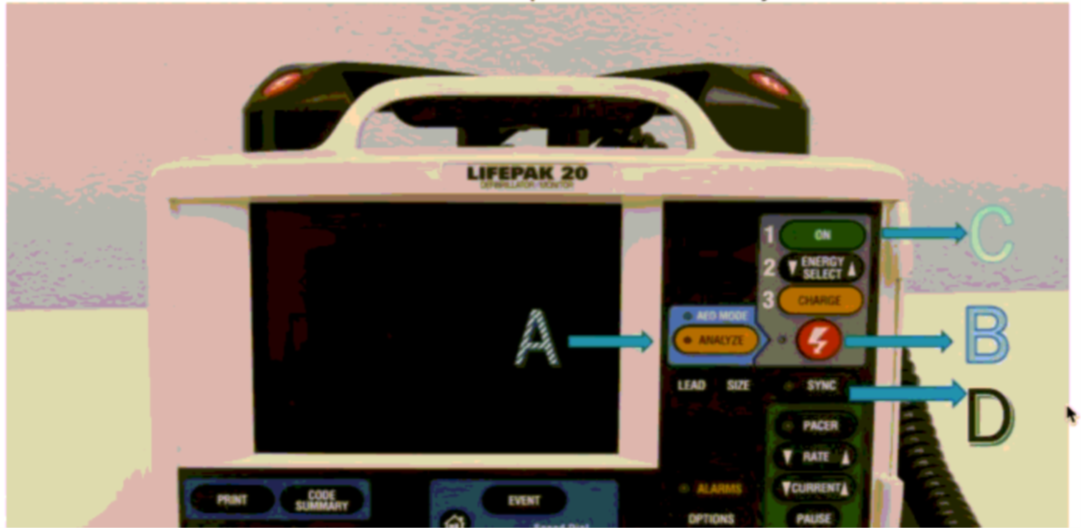The nurse notes a client in supraventricular tachycardia. The patient has a pulse and the cardiac monitor is at the bedside. The nurse understands electrical intervention is indicated. What button does the nurse push to ensure the electricity is delivered on the R wave? Refer to the picture.

ANALYZE
SHOCK
ON
SYNC
The Correct Answer is D
Choice A rationale: The “ANALYZE” button is typically used to allow the defibrillator to analyze the heart rhythm. It would not ensure that the electricity is delivered on the R wave6.
Choice B rationale: The “SHOCK” button is used to deliver a shock during defibrillation or cardioversion. However, it does not specifically ensure that the shock is delivered on the R wave6.
Choice C rationale: The “ON” button is typically used to turn the device on or off. It does not control the timing of the electrical delivery6.
Choice D rationale: The “SYNC” button is used in synchronized cardioversion to match the delivery of the shock to the R wave of the ECG, which is the peak of the electrical wave during which the ventricular cells are depolarized6.
So, the correct answer is D, after analysing all choices.
Nursing Test Bank
Naxlex Comprehensive Predictor Exams
Related Questions
Correct Answer is ["A","C","E"]
Explanation
Choice A rationale: Fever can cause an increase in metabolic rate which can lead to sinus tachycardia1.
Choice B rationale: Lisinopril is an ACE inhibitor used to treat hypertension, not a cause of sinus tachycardia1.
Choice C rationale: Albuterol is a bronchodilator that can cause sinus tachycardia as a side effect1.
Choice D rationale: Sleeping typically results in a slower heart rate, not sinus tachycardia1.
Choice E rationale: Dehydration can lead to low blood volume, causing the heart to beat faster to maintain blood pressure, resulting in sinus tachycardia1.
So, the correct answer is Choices A, C, and E, after analysing all choices.
Correct Answer is D
Explanation
Choice A rationale: An elevated ST segment is not typically associated with hypokalemia45.
Choice B rationale: A widened QRS complex is not a typical finding in hypokalemia45.
Choice C rationale: An inverted P wave is not a typical sign of hypokalemia45.
Choice D rationale: An abnormally prominent U wave is a common EKG finding in hypokalemia45.
So, the correct answer is Choice D, after analysing all choices.
Whether you are a student looking to ace your exams or a practicing nurse seeking to enhance your expertise , our nursing education contents will empower you with the confidence and competence to make a difference in the lives of patients and become a respected leader in the healthcare field.
Visit Naxlex, invest in your future and unlock endless possibilities with our unparalleled nursing education contents today
Report Wrong Answer on the Current Question
Do you disagree with the answer? If yes, what is your expected answer? Explain.
Kindly be descriptive with the issue you are facing.
